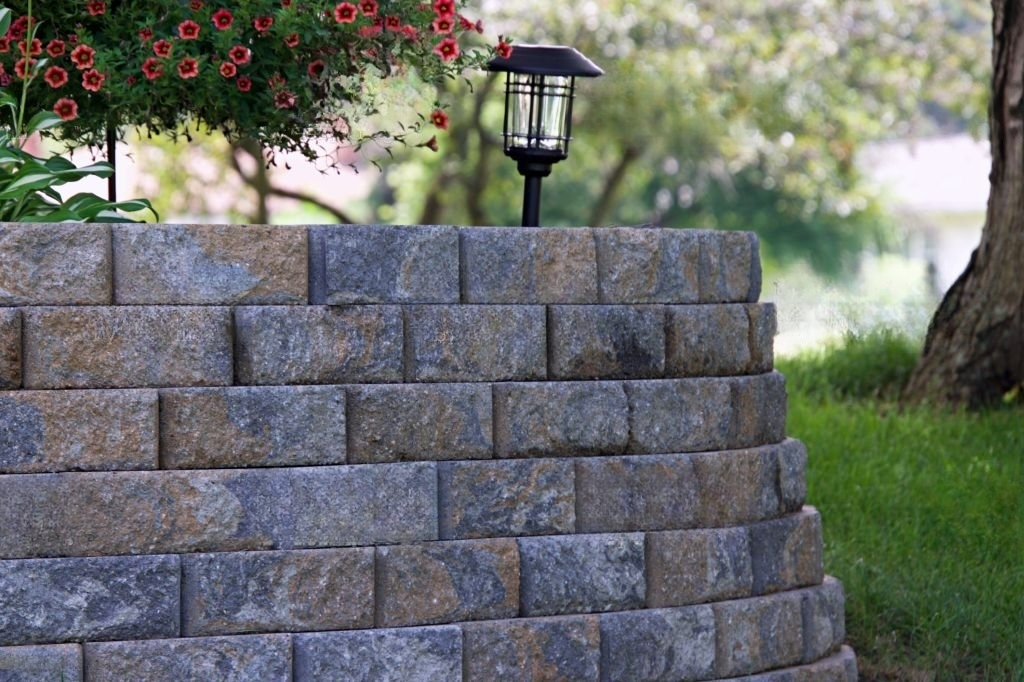Retaining walls are a crucial element in landscaping projects, as they provide support to soil and prevent erosion. When it comes to retaining wall designs, two popular options are brick and stone. While both materials have their pros and cons, the final decision depends on factors like budget, aesthetic preferences, and the intended purpose of the retaining wall.
One of the main advantages of brick retaining walls is their affordability. Concrete retaining wall blocks are often less expensive than natural stone, making them an attractive option for homeowners on a budget. Additionally, brick retaining walls are relatively easy to install, making them an ideal choice for DIY enthusiasts.
On the other hand, stone retaining walls offer unmatched durability and strength. Natural stone is not only resistant to weather and wear but also adds a unique, natural beauty to any outdoor space.
When choosing between brick or stone for your retaining wall, consider the intended purpose of the wall. If you are building a retaining wall for purely functional purposes, such as preventing erosion or supporting soil, a concrete retaining wall block may be the most cost-effective option.
What Is The Strongest Type Of Retaining Wall?
When it comes to retaining wall designs, there are various types available on the market. These walls serve a crucial purpose in preventing soil erosion and holding back earth or water. However, if you’re looking for the strongest type of retaining wall, then concrete retaining wall blocks might be your best bet.
Concrete retaining wall blocks are a popular choice for homeowners and contractors alike due to their strength and durability. These blocks are made of concrete, which is known for its strength and resilience. The blocks interlock with each other, creating a sturdy structure that can withstand the pressure of soil and water.
One of the most significant advantages of using concrete retaining wall blocks is their ability to hold up against extreme weather conditions. These blocks are designed to withstand heavy rainfall, strong winds, and even earthquakes, making them an excellent choice for areas prone to natural disasters.
Additionally, concrete retaining wall blocks are relatively easy to install, making them a popular choice for DIY projects. They are available in various sizes, shapes, and colors, allowing you to create a retaining wall that matches the aesthetic of your home.
In conclusion, if you’re looking for the strongest type of retaining wall, then concrete retaining wall blocks are a great option. Not only are they durable and long-lasting, but they can also withstand extreme weather conditions and are relatively easy to install.
Does A Timber Retaining Wall Need Drainage?
Retaining walls have become a common feature in modern landscape design. They serve to support and stabilize soil, especially in sloped or uneven terrain. A timber retaining wall is an excellent option for homeowners who prefer natural-looking designs. However, one critical question that comes to mind when constructing a timber retaining wall is whether drainage is necessary.
The answer is yes; a timber retaining wall needs drainage. Without proper drainage, the wall will be prone to damage from water accumulation. The wood material used in the construction of the wall will eventually rot and degrade, leading to structural instability. Water buildup can also cause the soil behind the wall to become saturated, leading to erosion and potential wall failure.
To prevent these issues, proper drainage must be incorporated into the retaining wall designs. One effective way to do this is by installing a perforated drainage pipe behind the wall. The drainage pipe should be surrounded by gravel to aid in water absorption and dispersion.
Alternatively, concrete retaining wall blocks are designed with built-in drainage systems. The retaining wall blocks have interlocking designs that allow water to flow through the wall and into the soil. This design helps prevent water buildup behind the wall and minimizes the need for additional drainage systems.
In conclusion, drainage is a crucial aspect of any retaining wall construction, including timber retaining walls. Proper drainage ensures the longevity and stability of the wall, minimizing the need for costly repairs or reconstruction in the future.
Do I Need A Building Consent For A Retaining Wall?
If you’re planning to build a retaining wall on your property, it’s essential to know whether you need a building consent or not. Building consents are necessary for any significant construction projects that involve specific criteria, such as structural design, building materials, and retaining wall designs.
A retaining wall is a structure designed to hold back soil and prevent erosion or the collapse of a sloping area. Retaining walls can be built with various materials, including concrete retaining wall blocks, timber, or natural stone. However, the materials used and the height of the wall can affect whether a building consent is required.
For instance, if you’re building a retaining wall with a height of over 1.5 meters or using specific materials, such as concrete retaining wall blocks, then you may need to obtain a building consent. Additionally, the building consent process ensures that the retaining wall design meets local building codes, safety standards, and environmental regulations.
It’s important to note that even if you don’t need a building consent, you should still ensure that the retaining wall is structurally sound, and the design is appropriate for the soil conditions and slope of the area. Poorly constructed retaining walls can lead to erosion, soil instability, and property damage.
In conclusion, before you start building a retaining wall, check with your local council to determine whether you need a building consent. Building regulations can vary depending on your location, so it’s crucial to ensure you’re complying with all local requirements. Additionally, consider seeking professional advice from a qualified engineer or builder to ensure your retaining wall is structurally sound and meets your specific needs.





